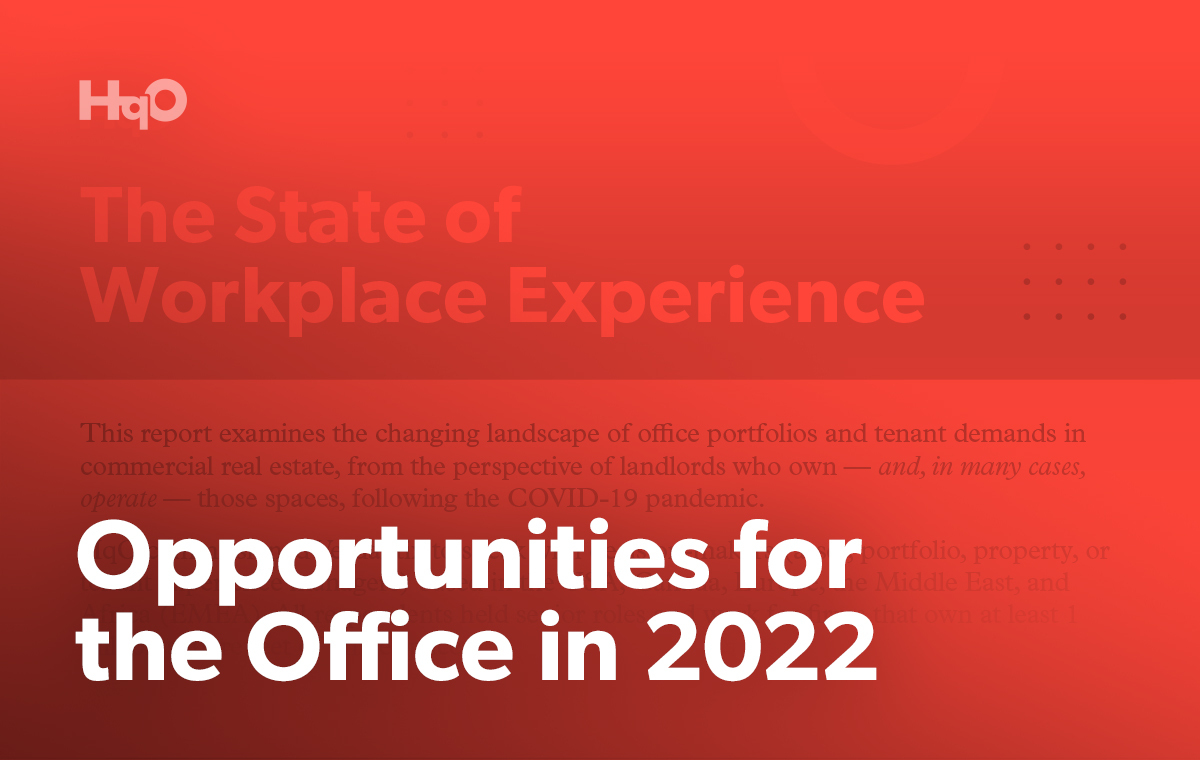Only a few years ago, commercial real estate (CRE) was all about tradition.
The industry depended on long-term, sometimes decades-long leases. Property demand was measured by location and physical amenities, meaning that owners and operators would invest in buildings in or around central business districts. If the buildings weren’t located in a city center, they would offer accessible commutes and/or flashy features like onsite gyms or dining halls. Likewise, corporate employers would pay top dollar to move into these prized spaces to run their businesses during their five-day, nine-to-five work week.
Since employees were expected to work in the physical office regardless of where they lived or what their role was, many employers and landlords didn’t place a heavy focus on the experiences within their office spaces. Employees showed up to work because they had to, a common practice that remained unchallenged on a global scale. Only leading companies like Google or Apple offered more for their employees at the time, setting a precedent for what was to come in the CRE landscape.
Addressing the Employee Divide
That was until late 2019, when everything changed due to the COVID-19 pandemic. Corporate employees were suddenly given a choice over where they preferred to work for the first time in many of their careers; they no longer needed to work in the office five days a week, or even at all. Instead, they could work from home part-time or full-time, enjoy flexible workspaces that weren’t necessarily in their main office building, or, quite literally, work from anywhere.
Once employees adjusted to this newer, more flexible way of working, they began to demand it as a workplace standard. The Great Resignation, which is still ongoing today, proves that employees are willing to place their personal values and preferences above the physical workplace — and are quitting their jobs in pursuit of more supportive work environments.
Because of this, landlords, property teams, and employers are all asking themselves the same question as they navigate the market in 2022: How can we, as an industry, create better workplaces to keep employees happy and productive — and consequently, help our businesses thrive in the long-term?
In order to solve this challenge, landlords and employers first need to assess their own real estate portfolios or office locations.
Impacts on Occupancy
Modern employee expectations for the workplace have, unsurprisingly, impacted commercial real estate occupancy.
Landlord respondents revealed that companies still have leases, but they’re not always full. Only 48% of landlords operate buildings with more than 75% occupancy, and an additional 20% operate buildings with just 51-75% occupancy.
Furthermore, from their perspective, those occupied spaces remain heavily underutilized. Only 24% of landlords see more than 75% daily utilization for their properties. The majority of landlords (36%) see just 51-75% daily utilization for their properties.
Some of this data correlates with what corporate employers revealed in our Office Insights 2022 Report. For example, 34% of employers indicated that they had already downsized their real estate portfolios, and an additional 42% are planning to downsize in the next two years.
However, landlord assumptions about office occupancy may be partially incorrect. Despite downsizing, corporate employers report that occupancy levels are on the mend. 48% of employers indicate that most or all of their employees are already back in the office, and 40% indicate that some or few employees have returned back to the office.
Because of this, corporate employers are focused on supporting both workers in the office and at home by taking advantage of hybrid work models: a significant 86% of employers have already implemented a flexible or hybrid working model since the beginning of the pandemic, and an additional 14% plan to implement these models in the next two years. Similarly, 68% of employers have redesigned their physical workspaces to support modern employee needs, while 28% plan to implement redesigned spaces in the next two years.
The Key Takeaway
It’s simple. Office space isn’t being used less, just differently.
With the rise of hybrid work models, the physical workplace needs to be transformed into a more purpose-built environment that tenants and their employees can truly benefit from, no matter where they work. Having a purpose-built environment also serves the various work-types within the hybrid work model to enhance employee productivity and thus achieve better business results. The data indicates that landlords and property teams have an opportunity to help employers create more meaningful workplaces for the people across their office locations. Inevitably, the ways they go about doing this will vary on a case-by-case basis.
Download our full State of Workplace Experience 2022 report to learn what other companies are doing to address tenant and employee pain points.



